Recently, we at AnimationXpress.com took you through WETA Digital’s cyber-thespianism magic that recreated Paul Walker in finishing the tent-pole Furious 7. While Peter Jackson’s VFX Studio, WETA Digital may have exhibited some serious cutting-edge technology, Furious 7 is not the only project where VFX studios have delivered some awe-inspiring visuals. Pushing beyond the realms of creativity, the fusion of ideas and motion capture technology has made it possible for creators to bring alive some jaw-dropping inhuman characters on-screen.
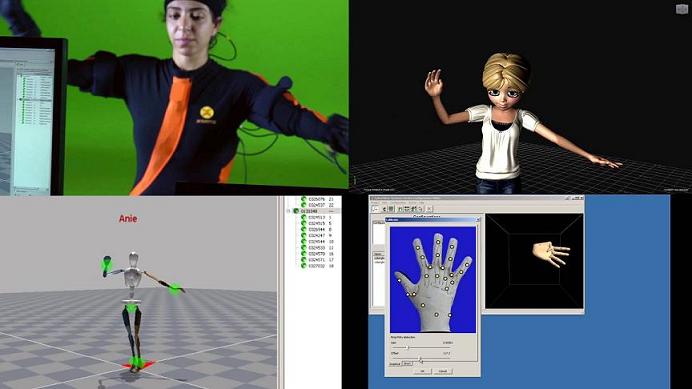
Basically the idea of motion-capture (mocapped) characters is to have real participants provide a template of human movement and translate those movements into different medium using computer generated imagery (CGI). We’ve seen the ‘King of Motion Capture’ Andy Serkis donning thelycrasuit pinned with multiple sensors at every part of his body along with cameras capturing his every movement. Andy’s real-life acting is recorded and this gives the animators a base to develop their subsequent simulations upon. Thus these motion capture performances on film were first recorded live and then recreated three dimensionally on the silver screen. From simple graphic modifications like showing a partially decomposed Mummy in the The Mummy franchise, to creating entire characters like the green giant, Hulk in the Avengers, VFX studios have simulated these animations on the basis of motion-capture sensors.
The earliest example of the entertainment industry using motion-capture is the short films of animator Max Fleischer. In 1915, he devised the Rotoscope, a concept which saw animators trace over frames of live-action film to give cartoon characters a recognisable fluidity, if not a photo-realistic look.Fleischer’s series Out Of The Inkwell utilised this method, including animated classics like Koko the Clown and Fitz the DogImpressed with this concept, even Walt Disney used Rotoscoping in Snow White and Seven Dwarfs (1937). Although this art was subdued over the decades since then, owing to extensive production costs and employing of perfect talent, Peter Jackson’s Lord of the Rings franchise in 2002 took the mocap technology to a whole new level giving the world one of the best characters, Gollum – originally known as Smeagol. Since then there has been no doubt that Hollywood filmmakers have included the tool of motion captures in their arsenal and various VFX and animation studios have started using performance capture to model 3D based larger than life characters and bring them to the big screen.
Following our ‘Best of Animation’ series, we at AnimationXpress.com bring you a countdown of the best motion capture performances that have brought some of the most memorable larger than life mocapped characters on the silver-screen.
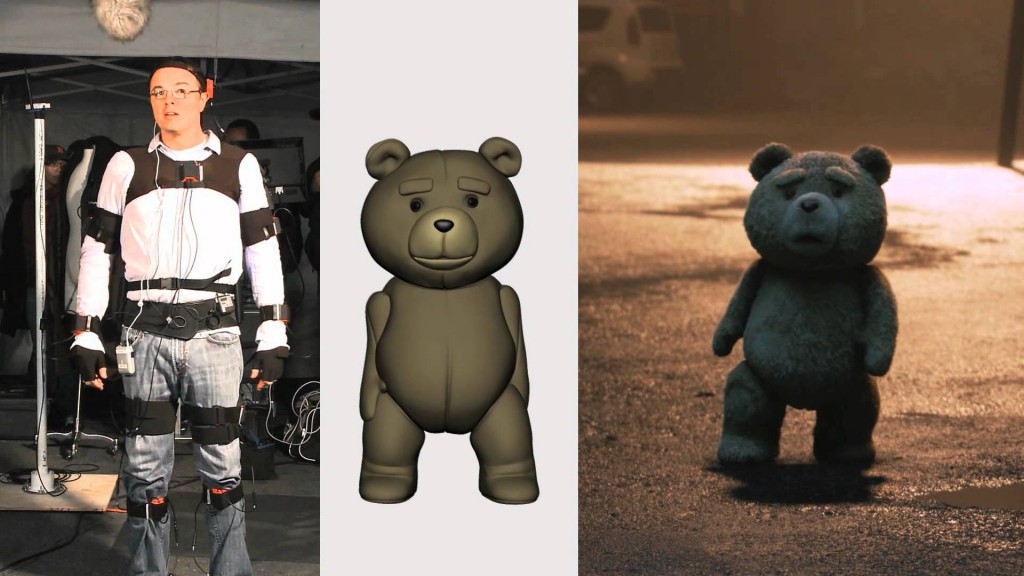
9. TED – The American comedy starring Mark Walberg and Mila Kunis brings alive the animated incarnation of a soft-toy teddy, Ted played by the director himself, Seth MacFarlane, who has voiced and acted as the lovable cuddly teddy-bear ‘Ted’. Ted’s animation used the motion capture technology recording MacFarlane’s movements with motion capture sensors and through computer animation brought on-screen by Tippett Studios and Iloura. On Ted’s motion capture, Seth commented that, “Once the motion capture technology was perfected we were able to do Ted in a more life-like way and have used that technology in a way that hasn’t been used till date. Like the Avatar technology has been used for family films, for adventure films, for science-fiction films, but nobody has really used it yet for traditional character comedy. The technology takes fantastical characters and makes them as realistic in movement as possible.”
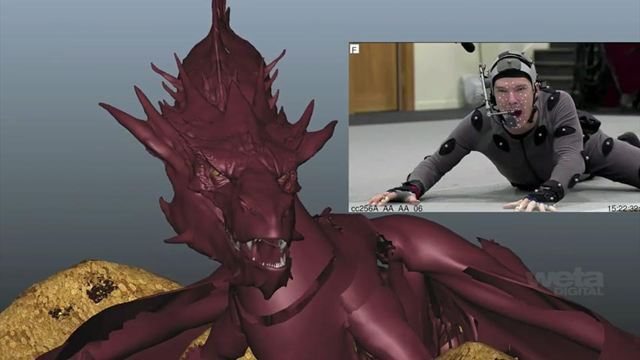
8. Smaug (The Hobbit franchise) – Hollywood’s not new to the idea of bringing the gigantic fire-spitting imaginary dragons on-screen but referred by critics as cinema’s greatest dragon incarnation, Benedict Cumberbatch’s Samug took dragons to a whole new level. Samug, the long headed, yellow-eyed beast is one of main antagonists, as well as a prominent digital character in The Hobbit universe. Peter Jackson’s WETA Digital actually had Benedict impersonate the reptilian movements and the actor had no easy time voicing and recording the enormous creature. To be better prepared, he actually visited the London Zoo to take notes of how reptiles move. David Clayton of Smaug’s Oscar-nominated VFX team from Weta Digital explained that, “Using our motion-capture stage, we recorded Benedict’s performances, which focused on the conversation with the Bilbo sequence. Smaug also covered a full range of moods, from supreme arrogance to paranoid suspicion, from curiosity to violent rage. As animators we had to transpose the elements of Benedict’s performance that were critical to the shot, such as head nuances and facial expressions. We then built up the majority of his motion with keyframe animation.”
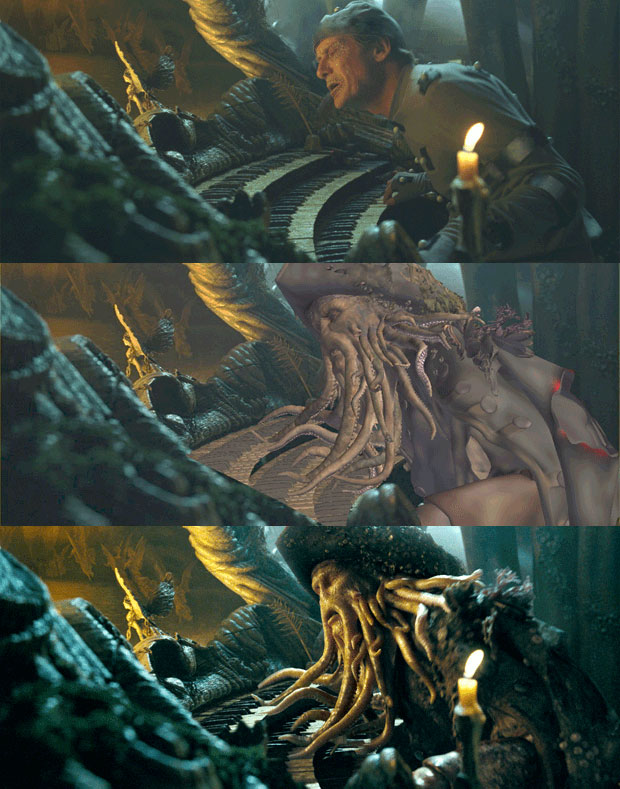
7. Davy Jones (Pirate of the Caribbean – Dead man’s Chest) – The fierce tentacle-faced Captain of the Flying Dutchman in the second instalment of Disney’s Pirates of the Caribbean (2006) franchise takes the next spot. Portrayed by Bill Nighy, Davy Jones is a cursed human cum sea monster who roams the seas to find souls who can join him in his quest. Pretty spooky! Davy Jones’s physical intimating appearance is all courtesy the motion-capture technology from the folks at Industrial Light and Magic, the VFX studio founded by George Lucas. For Jone’s character, Bill was recorded live on the sets with special make-up which was later computer generated during post-production giving Bill the Octopus-tentacles and a cephalopod like head. Technical work on Jones was rewarded with an Academy Award for Best Visual Effects.
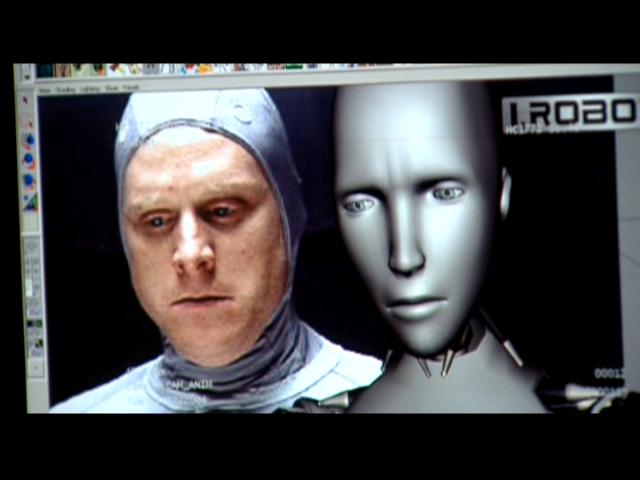
6. Sunny (IRobot) – Hollywood heartthrob Will Smith delivers a stunning performance as the techno-phobic detective in the sci-fi flick, IRobot (2004). However it is Alan Tudyk’s underweighted performance wearing the green mo-cap suit playing Sunny, the robot with the heart that shapes the movie’s arc. Alan’s brilliant interpretation as the android bot comes around using the motion capture that successfully gives Sunny the humanoid touch.
Convinced by his maker that he is different from the other robots, Sunny’s constant attempt to be human can be felt in his looks and his movements throughout the movie which is lifted from the tiniest nuances from Alan’s live performance. One can easily remember the emotional impact; Sunny has on us when he’s ordered to self-destruct and waits for his impending doom.
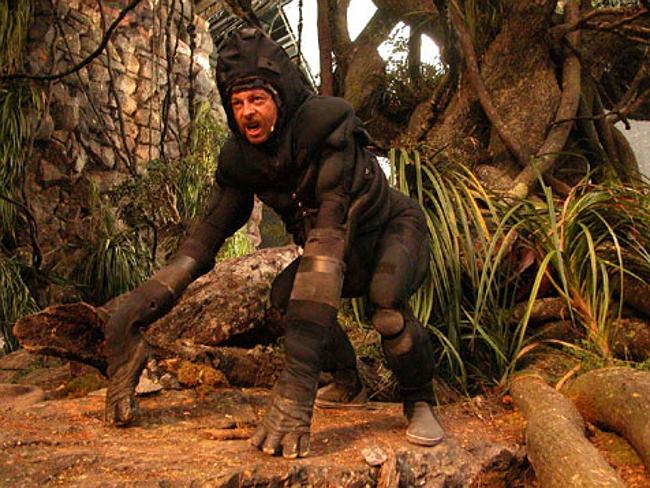
5. King Kong – The King of motion capture, Andy Serkis playing the King of all apes, King Kong can surely not be forgotten when we talk about larger than life characters brought on screen. Peter Jackson’s yet another visual spectacle gives us some jaw-breaking (literally) scenes with amazing performances from Kong, the 25- foot gorilla.
Andy Serkis, known to have pioneered and mastered the art of performing in the lycra suit, travelled all the way to Rwanda to watch the powerful simian creatures in the wild so that he could better mimic their movements on camera. The result was rewarded by the world as critics applauded Peter Jackson’s reboot, King Kong (2005) which went on to win the Academy Award for Best Visual Effects and Serkis himself winning various critical awards for his stupendous performance.
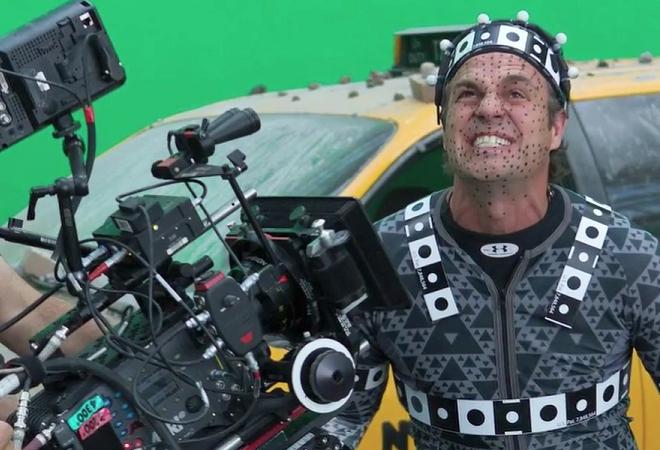
4. Hulk (The Avengers) – Marvel’s big-green monster, Hulk has been brought to the big screen more than a few times, but it is the recent Mark Ruffalo’s incarnation of the not-so-jolly giant in the The Avengers (2012) that steals the show.
In the bid to make the Hulk more like Mark, the animators from ILM VFX made the actor put on the mo-cap suit. Notching up the stakes, folks at ILM captured Mark’s facial performance during live shoot with their hyper-advanced mo-cap suits and tech and later translated it into the 3-D model of the Hulk. “What we were looking for wasn’t just the body performance but the facial performance, like the nuances that Mark brought to it that we could then bring it to the Hulk. Of course we needed to amp it up a little bit because Hulk’s facial structure is so much larger than the Hulk’s,” stated Jeff White, ILM Supervisor.
![]()
3. Neytiri (Avatar) – The Titanic director, James Cameron didn’t wait a decade for nothing when he pushed the barriers of motion capture in the highest Hollywood grosser till date, Avatar (2009). As the only female thespian on the list, Zoe Saldana as Pandora’s Neytiri is an epic creation from Cameron. Guided and handled exquisitely by mocap, Neytiri holds her own strong and fiercely independent character while also being the love-interest of the human protagonist, Jake Sully.
Playing the daughter of the leader of the alien tribe, Zoe’s Neytiri is torn between love and the desire to win freedom for her people. Zoe communicates this inner struggle well with her emotions and facial expressions completely translated into Neytiri’s animated blue character. This gives the ten-foot female Pandorian a depth no sole animation technique could achieve.

2. Ceaser (Planet of the Apes franchise) – Serkis obviously enjoys playing the simian because he was back doing what he does best and returns as the chimp leader of the rebellion against mankind in the new Planet of the Apes franchise. While in the first, Rise of the Planet of Apes (2011), Andy’s aped version, Ceaser plays mostly a silent role, the movie did see the chimp performing great acting using gestures, eye movements and well-mimicked actions. Serkis is convincingly incredible as he tells us exactly what’s going on in Ceaser’s mind throughout the movie. With WETA constantly perfecting their technology, the sequel Dawn of Planet of Apes (2014) has the intelligent chimp in an even better visually breath-taking role. Shot with 3-D cameras mostly outdoor and ditching the green screen, the movie took motion capture live at the filming locations. Andy’s performance and the works from WETA were greatly applauded with nominations for various awards.
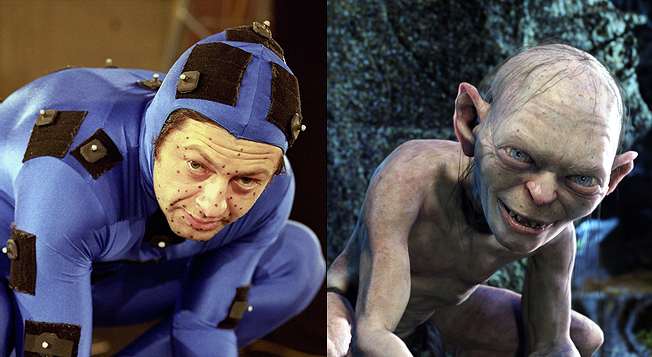
1. Gollum (Lord of the Rings & Hobbit franchise) – Now surely one couldn’t miss this one coming! Gollum, also known as Smeagol is arguably the most colourful roto-animated character from the Lord of the Rings (LOTR) and The Hobbit franchise. Surely Andy Serkis’ masterpiece, the pioneering Mo-capped fictional Gollum created by WETA Digital was first seen in LOTR – The Two Tower (2002). Joe Letteri of WETA Digital stated that “Gollum was the first CG character we were hoping to bring on screen that had to believably act in a human fashion with other actors. So what we wanted to do was to take Andy’s physicality and find a way to capture that and bring it to the digital character of Gollum and hence the idea of Performance capture.”
Gollum is not only known for his hideous appearance and repulsive voice but his dual inner personality that Andy has exceptionally performed and voiced. In his endless search for the most precious object in the world, the ring, the schizophrenic Gollum hosts a mix of emotions within itself. The whole character was built around Serkis’s look, from the way he speaks in that whining voice, mixing in various throaty coughs and noises to the way he insanely acts personifying the character of Gollum.
Andy comically also mentioned that what inspired him to bring out the raspy whining voice for Gollum was one his own cat’s choking voice. The role that transformed Andy from an actor to being the ‘King of Motion Capture’ is most certainly the best mo-capped character seen on-screen, till now.
Performance-capture has finally found the sweet spot in providing animated characters with the real human touch. Where once Hollywood’s acting community feared they would one day be replaced by fully obedient digital counterparts, modern motion-capture proves that may very well one day be the case. But there’s a silver lining as those actors will still be able to find work strapping on the ping pong balled-lycra suit if they so choose the harder way because at the end of the day you don’t really see the actor’s face but the embodiment of his work.
